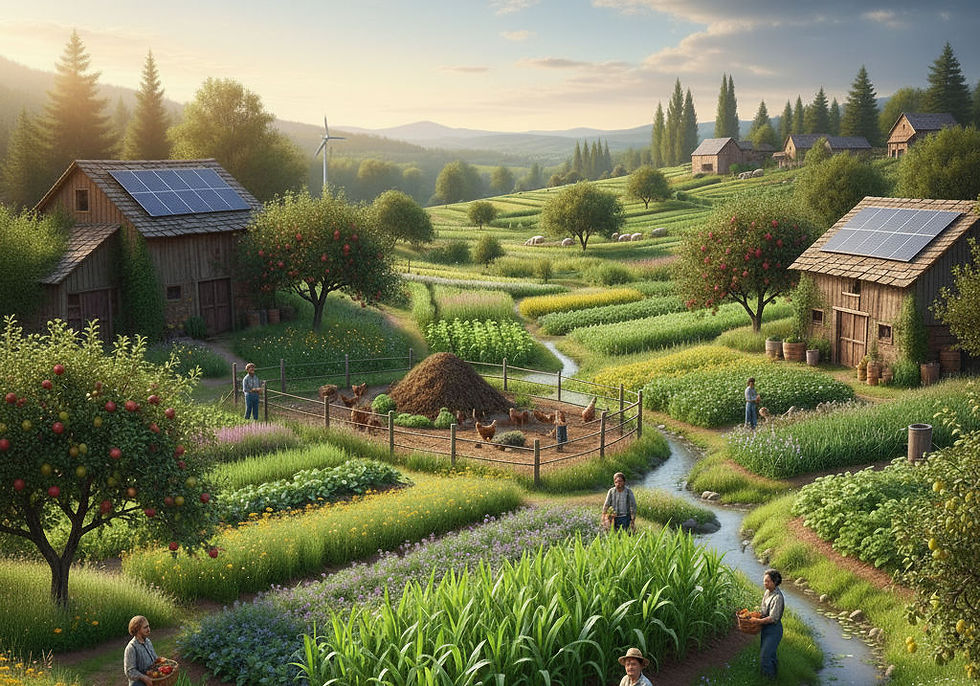Learn from the Past: How Indigenous Communities Pioneered Regenerative Agriculture
- Ron Frazer
- 3 days ago
- 2 min read
Updated: 2 days ago

The first step for a struggling farming community in Mexico was to build trenches, stone walls, and terraces to stop the erosion of the remaining soils and to slow the water runoff so their aquifers could recharge. They stabilized these barriers with tenacious local vegetation, such as the sweet-smelling vetiver grass, which withstands drought, flooding, and mudslides.
Once stabilized, the barren hillsides were reforested with native tree species, like nitrogen-fixing Alders (Alnus acumilata) and pines (Pinus oaxacana). The CEDICAM1 community saves its own native crop seed, using an in-the-field selection process that has persisted regionally since the pre-Columbian era. They preserve and exchange the best seeds of maize, beans, squash, chile, tomatillo, chayote, squash, sunflower, and prickly pear, as well as local specialties like cempoalxochitl, quintoniles, and huauzontle.
The farmers further improve the soil by planting and tilling in “cover crops,” which add nutrients and organic matter. Some native varieties are especially good for this, like the “frijol nescafe,” (Mucuna deeringiana) a nitrogen-fixing bean that thrives in dry soil. Finally, farmers add compost and plant debris so that the land is finally ready to receive these carefully maintained crop seeds.
The use of erosion control barriers, intercropping, and seed saving are part of the knowledge they inherited from their Zapotec2 ancestors. And it’s working. They have seen yields increase four-fold after incorporating these ancient and modern sustainable growing techniques. The newly established vegetation sequesters atmospheric carbon and attracts biodiversity.
The art of transforming lands of low ecological productivity into thriving foodscapes is not unique to the Mixteca. The Aztec Empire sustained itself on chinampas, intricate gardens built of vegetation and river muck, essentially artificial islands constructed in shallow lakes. Chinampas are widely considered the most productive form of agriculture ever invented, and are so fertile that they can yield four to seven harvests per year. Indigenous Mexicans have long-standing successes in positive ecological transformation.
Cultivating a Reverence for the Planet
One essential element missing from the World Resource Institute’s otherwise thorough and brilliant “menu of solutions” for the global food crisis was the ethical perspective that co-evolved with best practices in environmental management. This ethic, known as convivencia, or “living together” with both our human and natural communities, is best summarized by a Zapotec farmer:
“The ground beneath our feet is our Mother Nature, who has carried us and sustains us. As we work her, we do not profane her, rather we carry out our task as farmers in the context of the sacred. It is corn through which Mother Nature nourishes us. It is the flesh of our flesh, because we are people of corn. So we have to collect it in a manner that shows the respect we owe both to our soil and to our brother corn.”
———————————————————————————–
Centro De Desarrollo Integral Campesino De La Mixteca, (Comprehensive Rural Development Center of the Mixteca)
an indigenous pre-Columbian civilization that flourished in the Valley of Oaxaca in Mesoamerica



Comments